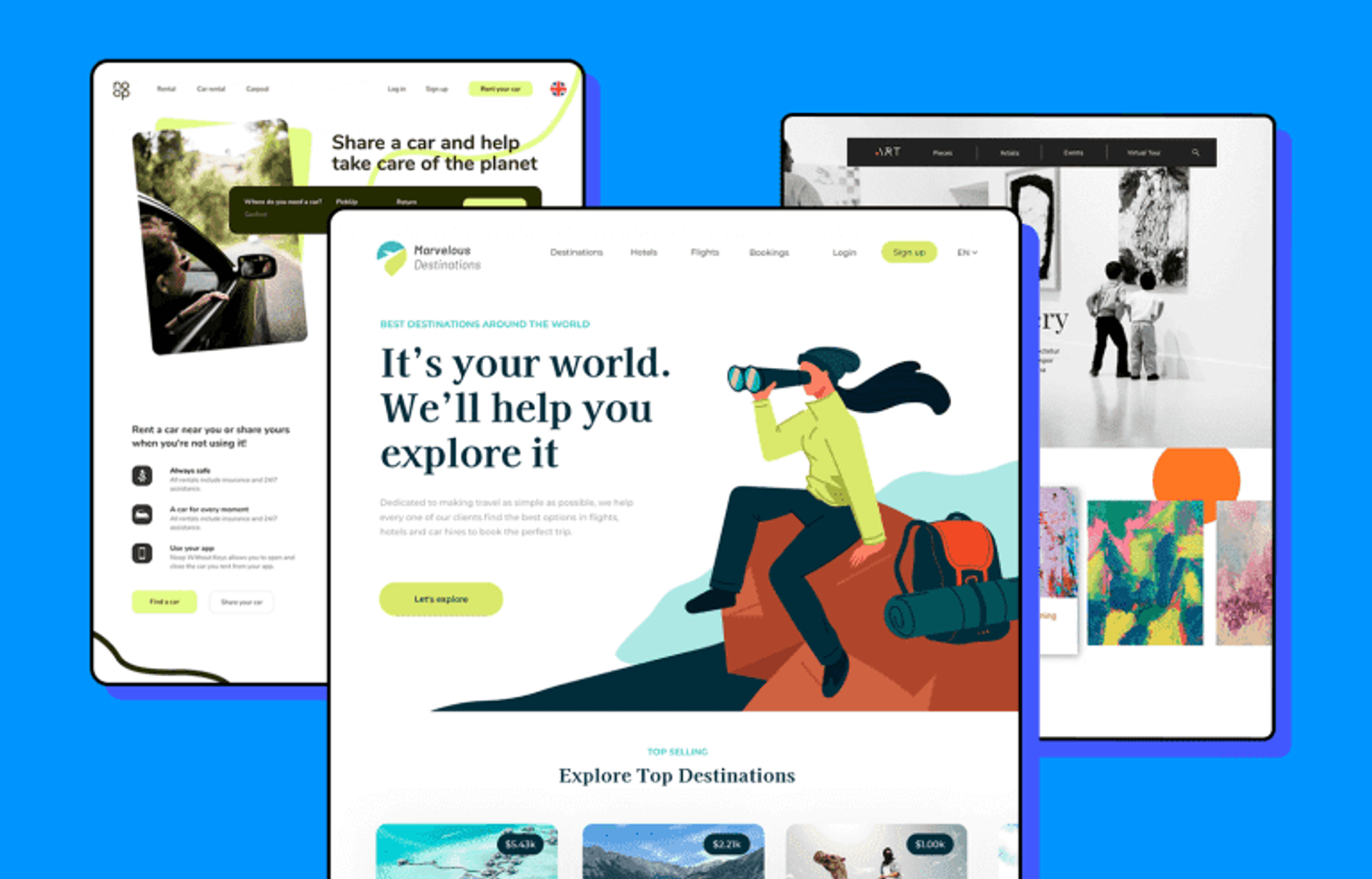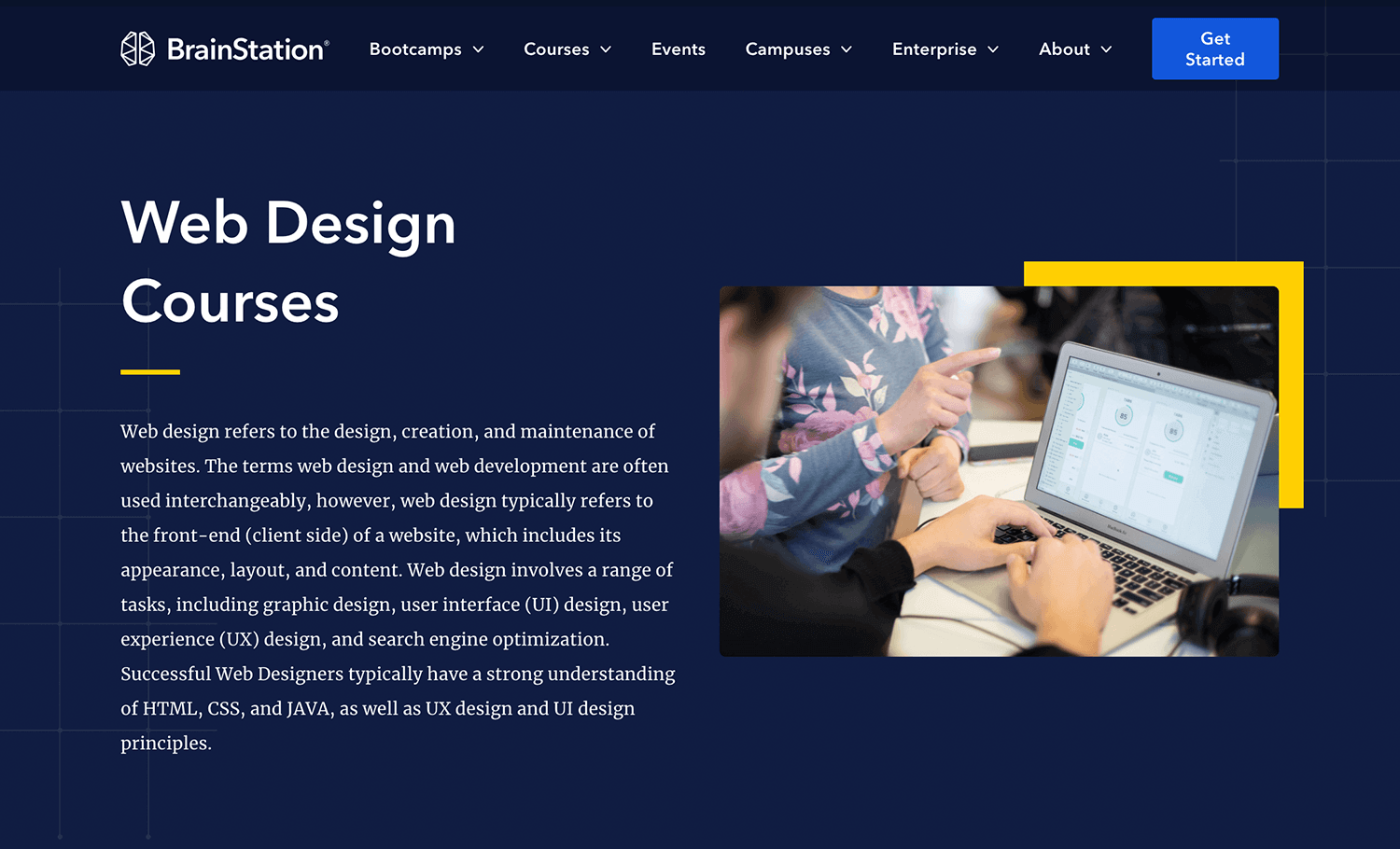Aligned Position Web Design: Comprehensive Web Design Solutions for Small and Large Businesses
Aligned Position Web Design: Comprehensive Web Design Solutions for Small and Large Businesses
Blog Article
The Most Effective Kinds Of Web Design to Improve Customer Experience and Involvement
In the ever-evolving landscape of digital communication, the performance of Web style significantly impacts user experience and interaction. Various design techniques, such as minimalist, receptive, and interactive formats, each offer special advantages that can cater to varied individual needs.
Minimalist Website Design
As digital landscapes come to be significantly messy, minimal Web design has become a powerful method to improving customer experience. This design approach prioritizes simpleness, focusing on vital aspects while removing unneeded disturbances. By making use of sufficient white room, simple navigating, and a restricted color combination, minimalist style promotes clarity and routes user focus to key content.
The core principle of minimalist website design is to produce a smooth communication for individuals. By minimizing cognitive load, users can quickly comprehend information without feeling bewildered. This straight technique not just boosts functionality but likewise motivates engagement, as visitors are most likely to discover a website that is visually enticing and easy to navigate.
Furthermore, minimal layout commonly emphasizes typography and images, making use of these components tactically to convey messages efficiently. In significance, minimalist Web design is not just a fad; it is a thoughtful technique that recognizes the value of user-centered layout.
Receptive Web Design
In today's diverse electronic environment, receptive website design has become important for developing a smooth individual experience across a plethora of devices. As individuals access websites on mobile phones, tablets, laptops, and desktop computers, the capability of a website to adapt its format and material to different screen dimensions and resolutions is important.
Receptive Web design employs flexible grids, images, and CSS media queries to make certain that Web content exists ideally, no matter of the gadget made use of. This technique not only enhances the aesthetic appeal of a website yet likewise significantly enhances functionality. Users are most likely to engage with a site that provides a consistent experience, as it gets rid of the aggravation of needing to zoom in or scroll exceedingly.
By embracing responsive design, companies can enhance their visibility and reach a wider target market. In recap, responsive Web style is a basic practice that improves user experience, involvement, and general satisfaction.
Interactive Web Style
Responsive Web style prepares for boosting individual experience, but interactive website design takes this a step additionally by involving individuals in a more vibrant method - Aligned Position Web Design. By integrating aspects such as computer animations, clickable models, and real-time feedback, interactive Web style astounds customers, drawing them into a richer surfing experience
This strategy not only promotes engagement yet also motivates users to explore material actively rather than passively consuming it. Methods such as gamification, where users make incentives for completing jobs, can substantially boost the time invested on a website and improve overall fulfillment. Interactive attributes can simplify complex info, making it more digestible and satisfying.

Including interactive design components can additionally cause higher conversion rates, as customers are more likely to engage with a website that proactively includes them. Aligned Position Web Design. Ultimately, interactive Web layout transforms user experiences right into unforgettable journeys, guaranteeing that visitors return time and once more
Flat Layout
Identified by its minimalistic method, flat design highlights simpleness and performance, removing away unneeded elements and focusing on essential features. This design philosophy focuses on use, making sure that customers can navigate user interfaces easily and effectiveness. By using a clean aesthetic, level layout eliminates the mess often discovered in much more luxuriant designs, thus boosting individual emphasis on content and functionality.
The characteristic of flat design depends on link its use vibrant colors, easy typography, and geometric forms. These components add to a visually attractive interface that is both approachable and contemporary. Additionally, level layout fosters a sense of quality, allowing customers to recognize essential actions and info without disturbance.
Moreover, level design is particularly efficient in responsive Web design, as its simpleness converts well across different gadgets and screen sizes. The lack of complex textures and slopes decreases packing times, which is crucial for keeping individual involvement. As digital landscapes remain to progress, level style continues to be a relevant option for developing user-friendly websites that enhance total experience. By concentrating on vital features, flat style not only fulfills individual requirements however also urges smooth communication, making it a vital component of effective website design approaches.
Flexible Website Design
Flexible website design customizes the individual experience by producing several taken care of layouts tailored to various display sizes and devices. Unlike receptive style, which fluidly changes a single layout, flexible style uses distinctive formats for specific breakpoints, ensuring optimal presentation on different platforms. This method allows designers to concentrate on the unique features of each tool, enhancing usability by supplying precisely what users require based upon their context.
One of the key advantages of adaptive Web style is its capability to enhance tons times and performance. By offering customized material and pictures that fit the individual's tool, sites can lessen information usage and improve loading rates. This is especially advantageous for customers with slower connections or limited data strategies.

In addition, flexible layout facilitates a much more regular and controlled branding experience. Because designers create numerous designs, they can make sure that the aesthetic components straighten with the brand name's identification throughout various platforms - Aligned Position Web Design. This leads to a cohesive customer experience, boosting interaction and advertising individual retention
Conclusion
To conclude, the assimilation of minimal, responsive, and interactive website design principles substantially boosts customer experience and engagement. Minimalist layout promotes quality and emphasis, while responsive design makes sure versatility throughout different gadgets, advertising accessibility. Interactive layout mesmerizes customers through dynamic components, motivating expedition and customization. Collectively, site link these style approaches check these guys out add to the development of user-friendly environments that not only improve complete satisfaction but additionally drive greater conversion rates, emphasizing their essential value in modern Web layout techniques.

Minimal design promotes clearness and focus, while receptive design ensures adaptability across different tools, advertising availability. Jointly, these style comes close to contribute to the production of straightforward environments that not only enhance fulfillment however also drive greater conversion rates, highlighting their crucial relevance in contemporary Web style strategies.
Report this page